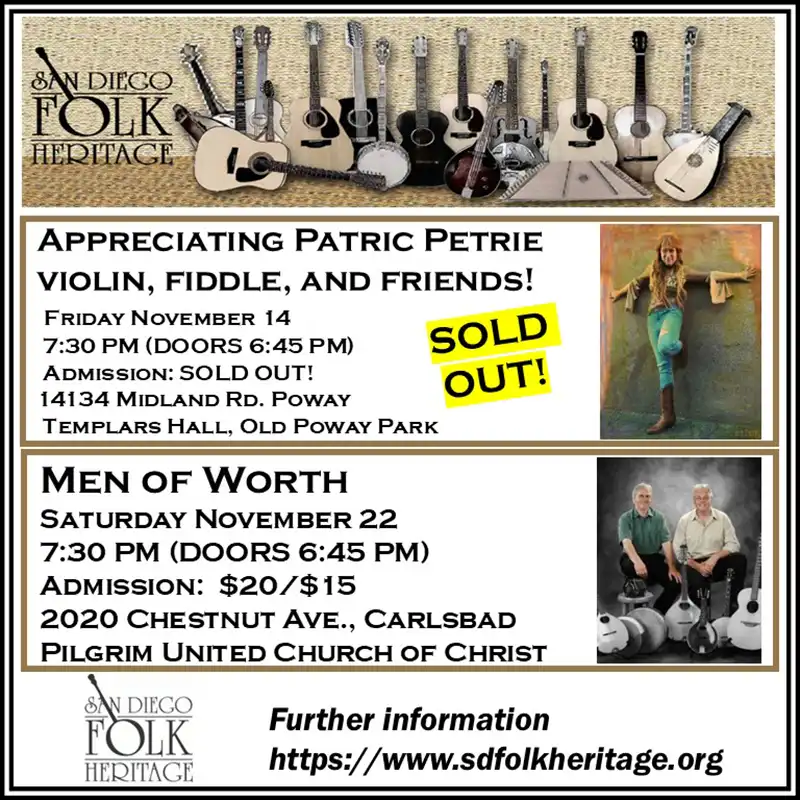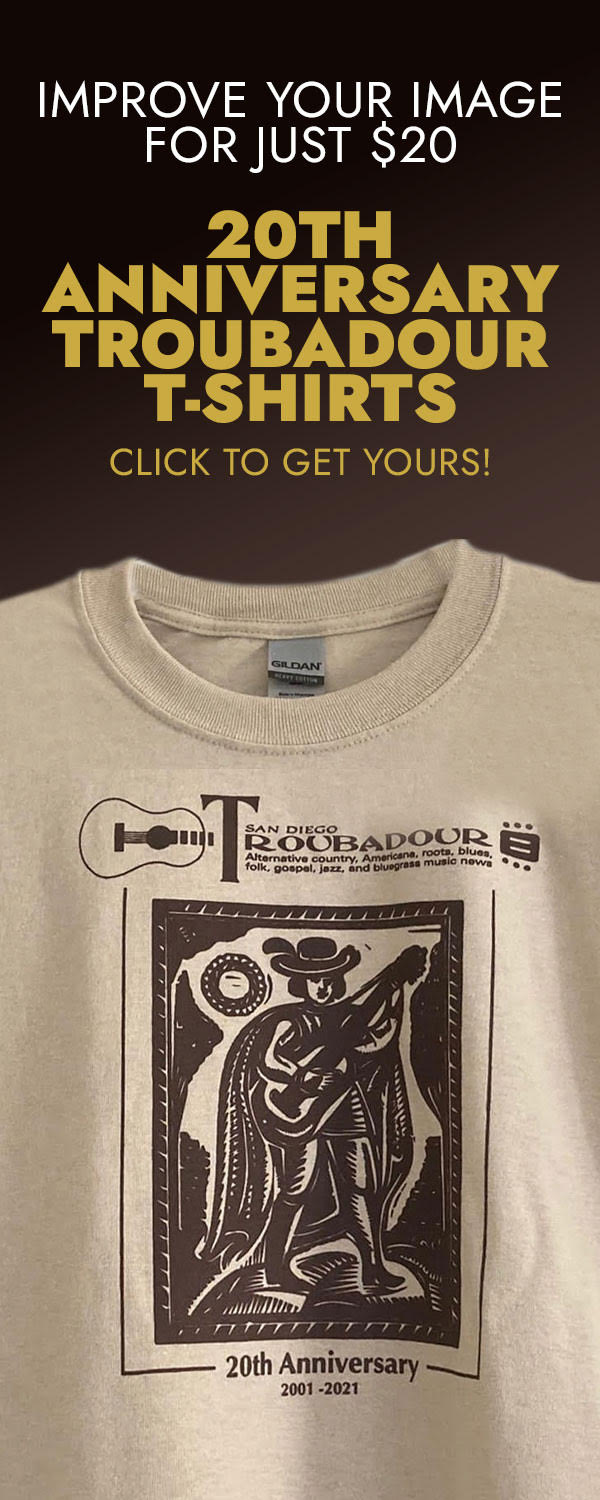Ask Charlie...
Picky, Picky, Picky
Hello Troubadourians! Happy 2021! I’m sure most of us are glad to see 2020 in the rear view mirror. For many, high hopes quickly turned into worries, but maybe we’ll be able to view this past year in 20-20 hindsight and reflection. The guitar informs much of my musical vision but when I write this column each month, I try to be inclusive of more that just guitar players. This month, however, is all about guitars, although I do hope all you non-guitarists will keep reading….
There has always been much discussion among guitar players as to which hand is more important to being a good player. Certainly, having dexterity in your fretting hand is very important when playing complex chords, or even just having the muscle memory to play “cowboy chords” in first position without looking. However, I am of the opinion that it’s the picking hand that has the most influence on what we think of as good playing. I’m not alone in this thinking either. For example, in a recent article from Guitar Player magazine, Leo Kottke stated that, in his opinion, the right hand is much more important for his playing. Now you might say that for a finger-style player such as Kottke this makes sense, but what about those players who primarily use a flatpick? Well, none other than the late Edward Van Halen has said the same thing (tapping anyone?). Granted, the techniques are—or can be—very different but the idea is the same: put controlled energy and movement into the strings and synchronize that energy and movement with the fretting hand.
Let’s talk a bit about what techniques we might use, beginning with simple bare fingers. Classical guitarists exclusively use their fingers and thumb to pluck the strings. Some use their nails while some use only the flesh while others use a combination of both. Usually, they will pluck the strings moving toward the soundboard of the guitar—called a rest stroke—but there are occasions where the player might pluck back and forth. Or, simply brush the strings outward with the back of the nails. This technique is especially prominent with Flamenco guitarists and is called Rasgueado. You will likely find that accomplished classical music players use all of these strokes and many others as well, and it’s okay to use whichever of those creates the sound and tonality that is desired. Remember that last statement as it will apply to everything that follows. While we’re talking about finger-style playing, or “finger pickin’” as Chet Atkins might have called it, you can stick with just fingers or you can start adding picks to your thumb and fingers, or finger. Merle Travis certainly didn’t invent using thumb and fingers to pluck the strings, but he defined an entire style and approach with his innovative playing. Travis used a thumbpick and his index finger exclusively to produce his complex rhythm/melody style. When necessary, or just when he felt like it, Travis could shift quickly from finger picking to flatpicking in the midst of a song by gripping his thumbpick like a flat pick. This leads us to Chet Atkins, who also used a thumbpick but incorporated his index and middle fingers—and later his ring finger as he embraced some classical music techniques into his own sophisticated style. Neither Travis nor Atkins used picks on their fingers, but Leo Kottke did so right from the beginning.
The use of finger picks is primarily to increase the volume of your playing and will add a metallic tonality and sharpness to the notes. In the case of Kottke, he said it added speed and power to his picking, often at the expense of subtlety. Much like the bluegrass banjo, players who use thumb and finger picks on the guitar tend to “play loud, go fast, and leave others in their dust.” But sometimes that is a necessity not an attitude. Old-time blues players who usually played on the street or unamplified in honky-tonks needed all of the volume they could muster. Players like Leadbelly (Huddie William Ledbetter) and the Reverend Gary Davis made good use of a thumbpick and metal fingerpicks.
Other than one’s fingers, what else would we use to pick the strings? How about the ubiquitous flatpick? So-named because it is, well, flat and comes in an array of shapes, sizes, and thicknesses from paper-thin to slab-thick and from tiny teardrop shaped jazz picks to the large Dorito-shaped plectrums favored by Carlos Santana. Owing to the basic simplicity of the small piece of stamped plastic that is a flatpick, there are literally hundreds of companies who make them in all standard and exotic shapes, sizes, and materials. But perhaps the most common would be the Fender Medium (aka size 351), which is the familiar, roughly quarter-sized triangle with two rounded corners and one pointy corner. Neither too large nor too thick, it works well for most strumming and picking styles. The slightly thicker and stiffer Heavy is nearly as popular and equally as versatile. Perfect for styles from rock to country, from bluegrass to jazz, and everything around and between, most players will use a flatpick at some point and the majority will stick with it as their default. Whether alternate picking, cross-picking, or just strumming, a flatpick works for pretty much every genre and style and can be as expressive as fingers when used creatively. Depending on the material and thickness of the pick, the tone that is produced can be bright, dark, or anywhere in between. And it’s perfect for the edge-of-the pick harmonics that can be produced by picking across a string while partially muting it with the side of your thumb. A flatpick can also be combined with your picking hand fingers in what is called hybrid picking, a technique that is as versatile as it sounds. Gripping the pick between the thumb and index finger, you add one or more fingers to taste. You can strum, fingerpick, arpeggiate, or pluck strings simultaneously when chording like you might on a piano. One of the first well-known practitioners of hybrid picking was Clarence White, who used a flatpick and two fingers for his groundbreaking bluegrass and country-rock playing. Another influential hybrid picker is James Burton, who added a metal finger pick to his middle finger to go along with the flatpick. It is my go-to technique for essentially everything I play as it works equally with electric and acoustic guitars.
There are some obvious outliers and non-conformists in the mix as well. Brian May and Billy Gibbons both famously use currency as plectrums (a sixpence for May and a peso for Gibbons, which contribute greatly to each of their distinctly unique tones). Then there are electric players that use only fingers—Jim Messina, Mark Knopfler, Ritchie Kotzen, Robbie Krieger, and Jeff Beck come to mind.
So, it doesn’t really matter what you use to produce the energy and movement as long as you are expressing what you want to through your music.
Need to know? Just ask… Charlie (ask.charlie@hotmail.com)








